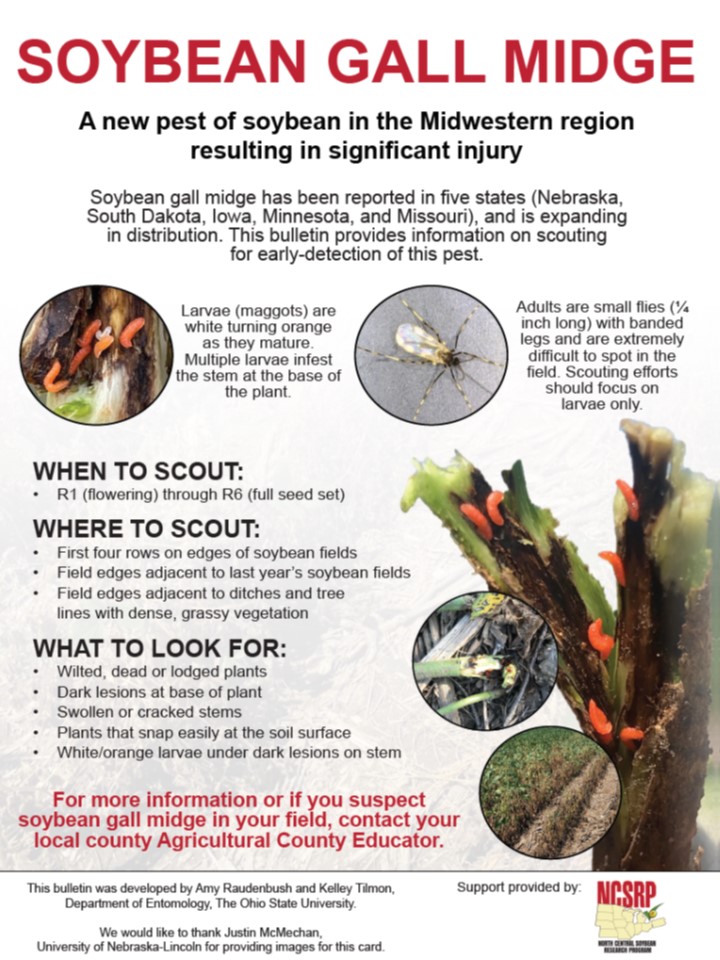Soybean gall midge: learn to identify this potential invader
Authors: Nick Seiter1, Joseph Spencer2, and Kelly Estes2
1University of Illinois Dept. of Crop Sciences; 2Illinois Natural History Survey
Farmers in several states to our west (particularly in eastern Nebraska) have been dealing with the soybean gall midge for several years. We have been fortunate to avoid this new soybean pest so far in Illinois (a current distribution map, scouting instructions, and additional information are available at https://soybeangallmidge.org). We want to stay on top of soybean gall midge if it does arrive here, and proper identification is critical to that effort. Our colleagues Kelley Tilmon and Amy Raudenbush at Ohio State have developed a postcard-sized soybean gall midge identification guide with support from the North Central Soybean Research Program. If you are a member of the Illinois Soybean Association, you should receive a copy in the mail later this month, an effort arranged by our colleague Chris DiFonzo at Michigan State. The best time to scout for the larvae is from flowering to seed fill, so keep it in your truck during the upcoming growing season as a handy identification aid in case you come across anything suspicious. A few things to look out for:
- Wilted, dead, or lodged plants, especially at field edges adjacent to soybean residue
- Dark lesions at the base of the plant, along with swollen or cracked stems
- Plants that snap easily at the soil surface
If you find these symptoms, peel back the surface of the stem; soybean gall midge larvae are white or orange, and will be present within the stem. If you find something you suspect might be soybean gall midge, take a picture and send it to fieldcropinsects@illinois.edu, along with where you found it; you are also welcome to call me at the number below with any questions. While we are hoping to continue to “strike out” in our efforts to find soybean gall midge in Illinois, if it does arrive here, we want to know as soon as possible so we can better manage it.
Contact: Nick Seiter, Field Crop Entomologist | nseiter@illinois.edu | (812) 593-4317






